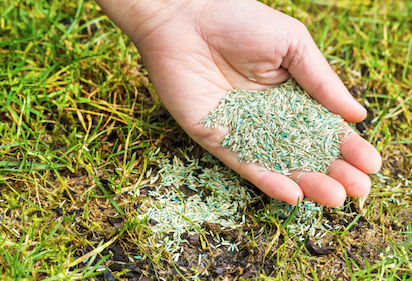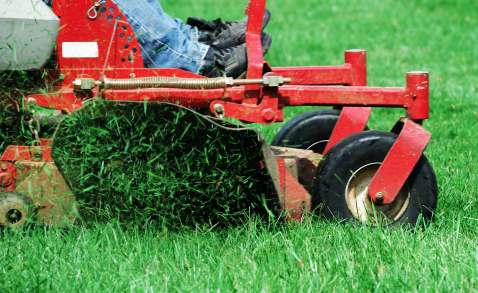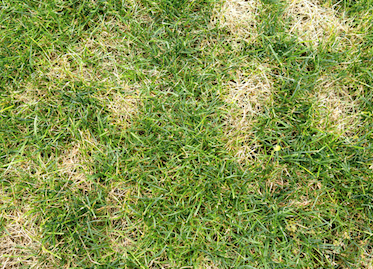Follow these tips for how to care for your grass in the summer, so your lawn can last as long as your summer fun!
Summer is here, and if you’re like most of us in Florida, you’ve already been enjoying your time outdoors for a few months now. Have you noticed your lawn beginning to lose its luster? Are your trees not looking as green as they could be? Summertime is hard on your lawn and trees, and before long, the stress of heat, drought, and high traffic can begin to take a toll on your landscape. Follow these tips on how to care for your grass and trees in the summer, so your lawn can last as long as your summer fun!
Lawn Care Tips
Backyard barbecues and lounging by the pool are the perfect ways to relax and enjoy time in the spring and summer. But, before you can get outside and enjoy your backyard, you have to get your landscape prepared for outdoor activities! Check out these tips to get the perfect lawn for spring and summer fun in Florida:
Lawn Fertilization
 Did you know proper lawn fertilization is key when attempting to maintain a healthy lawn throughout the harsh heat of summer? To save your lawn, fertilize it in the middle of the summer to replenish lost nutrients and give it a healthy kickstart. For the best results, fertilize after mowing and when the grass is dry.
Did you know proper lawn fertilization is key when attempting to maintain a healthy lawn throughout the harsh heat of summer? To save your lawn, fertilize it in the middle of the summer to replenish lost nutrients and give it a healthy kickstart. For the best results, fertilize after mowing and when the grass is dry.
Lawn Aeration
The Florida sun can be just as harsh on your lawn and plants as it can be on your skin. The only difference is we can use sunscreen to help prevent it, but your landscape can’t! If the hot sun is leaving bare spots on your lawn, your soil may be compacted. You may want to consider lawn aeration if this is the case. Lawn aeration helps loosens the soil, allowing your grass to absorb vital nutrients like water, air, and lawn fertilizer. Once you aerate your lawn, the best course of action is to apply lawn fertilizer. When followed by fertilization, your lawn is then able to get the nutrients it needs for an extended period of time, optimizing the effects of lawn aeration.
Watering Tips For a Healthy Lawn
You’re not the only one who gets thirsty in the summer–your lawn needs to stay hydrated too. Watering your lawn isn’t as simple as just drenching it once in a while. Keep in mind the following when watering your lawn:
-
Water about 1-1.5 inches per week.
-
Water early in the day, so the water doesn’t get evaporated before it reaches the roots. The best time is between 5 a.m. and 9 a.m.
-
Water deeply and less often, rather than shallow and more often, to encourage roots to grow deeper into the soil.
-
Be consistent with your watering — watering on and off or sporadically is not good for your lawn.
Lawn Mowing Tips
 Don’t let the summer heat beating down on you discourage you from getting outside and mowing the lawn. Although it may be more comfortable and convenient to mow your grass shorter and less often, doing so is actually unhealthy for your grass. Instead, be sure to mow more often and keep your blades at a higher setting. The general rule to follow is to never cut more than one-third of the height. It might be a little bit more work for you, but in the end, you’ll be rewarded with a gorgeous landscape when your grass is kept a little bit higher.
Don’t let the summer heat beating down on you discourage you from getting outside and mowing the lawn. Although it may be more comfortable and convenient to mow your grass shorter and less often, doing so is actually unhealthy for your grass. Instead, be sure to mow more often and keep your blades at a higher setting. The general rule to follow is to never cut more than one-third of the height. It might be a little bit more work for you, but in the end, you’ll be rewarded with a gorgeous landscape when your grass is kept a little bit higher.
Weed Control
The summer season is weed season, as the weeds start to grow up through your lawn in seemingly insurmountable numbers. To control them, you can pick weeds the old fashioned way or reach for an herbicide weed killer. Keep in mind though that weed control treatments can further stress an already exhausted lawn, so be sure to use sparingly. The best way to have a weed-free lawn is to prevent them from coming up in the first place–this includes keeping your lawn in generally good health, with consistent fertilizing, mowing, watering, and more.
Insect and Disease Control
 Stressed out summer lawns are easy pickings for insects and are easily overwhelmed by disease. An already tired lawn can’t properly protect itself as well as it normally can, and might need some help from you to make it through the long summer months.
Stressed out summer lawns are easy pickings for insects and are easily overwhelmed by disease. An already tired lawn can’t properly protect itself as well as it normally can, and might need some help from you to make it through the long summer months.
-
For fungal infections like brown patch, apply fungicides according to package directions. Avoid over-watering and watering in the nighttime, as saturated soil allows the fungus to grow unchecked.
-
For many bug species, your lawn provides food and shelter. Pesticides can work wonders, but be careful when using them on stressed lawns.
Brown Spot Repair
Have you noticed any brown spots on your lawn? You will likely notice them in areas where your dog likes to do its business. The extra nitrogen in pet urine can cause browning of your lawn, just like if you over-fertilized it. To get your lawn back to normal, keep the pups off the grass and water the area well. Then, use a grass repair kit to encourage the grass to come back!
Tree and Shrub Care
Nothing beats the beauty of a yard filled with flourishing trees in the summer. Unfortunately, the harsh elements associated with the season (think blazing heat, drought, and intense storms) can cause permanent damage. Taking care of your trees is a tricky task. The following tips can help you develop a summer tree plan for protection when your trees need it most.
Water Your Trees
Trees get thirsty fast in the heat, but the amount of water they need varies depending on factors such as the type of tree, its age, and its soil type. When the weather is very hot, water can evaporate before it gets to the roots. Water trees slowly enough for roots to soak it up to prevent the water from evaporating before it can get to the roots. Watering too quickly can create a shallow root system–and can cause root rot!
Mulch Your Trees
Mulching is a terrific way to give your trees the benefits of oxygen-rich soil filled with nutrients–something that isn't possible in a natural backyard setting. Plus, because your trees will retain moisture from the mulch, they won't have to compete with nearby vegetation for water. Mulching also reduces weeds– a plus for homeowners who don't want to pull weeds in the heat. It can also make mowing easier because you won't need to trim around the trunk.
How much mulch do trees need? According to TreesAreGood.com, 2 to 4-inches is usually enough. Cover the entire area evenly, taking care not to spread too much mulch against the root flare around the trunk.
Prune Your Trees
Summer weather conditions are difficult to predict. Preventative pruning can be the key to protecting your trees from damage due to lightning and wind. Pruning entails thinning top branches and clearing away dead branches to help the tree survive harsh weather. Weak branches may need bracing or cabling for protection from storms.
Fertilize Your Trees
The early spring is the best time to fertilize your lawn with slow-release fertilizer, which will benefit your trees through the summer into fall. Determining the appropriate fertilizer ratio can be difficult. Each bag is labeled with a three-number formula:
-
First number: nitrogen content
-
Second number: phosphorous content
-
Third number: potassium content
A professional tree and shrub service company can help find the right dosage for your specific trees.
Get on Your Way to a Beautiful Green Landscape
By following these steps and keeping these tips in mind, you should be on your way to a beautiful green setting for all of your outdoor activities. With that being said, managing a landscape is hard work, especially when you have a full-time job or a family to take care of. If you want a landscape that is the envy of the neighborhood, you may need a little bit of professional help. Here at Evergreen, we offer lawn care services that include lawn fertilization, weed control, mosquito control, tree & shrub care, lawn aeration, and more! We'll take the work off of your hands and ensure your lawn always looks it's very best in every season.
With the help from our team, you can avoid having to do all of the dirty work yourself and still get the landscape of your dreams in no time.
